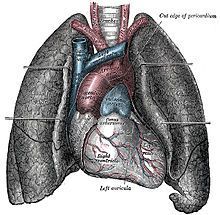Bigger Lungs Tied To Higher Success Rate Of Transplants: Could A Person's Height Determine Their Survival?

Researchers from the University of Iowa have concluded a study involving patients who have received a double-lung transplant. Results of their analysis show that bigger lungs may lead to a better chance of survival compared to someone who receives a smaller organ.
Lead researcher Michael Eberlain, along with his colleagues from the university, came up with a new strategy for matching lung size to a patient dubbed the "predicted total lung capacity ratio." Before this new formula was discovered, lung transplant candidates were matched with a lung that met their proportions.
"The real strength of this study may be in showing that utilizing pTLC allows for a more standardized way of matching donor lungs compared to the height method," explained Seth Force, from Emory School of Medicine in Atlanta, who was not involved in the study.
"The data in this manuscript make a compelling argument for the lung transplant community, as well as UNOS, to consider changing to a pTLC method for lung sizing for listed patients."
The research team used data from the United Network for Organ Sharing to complete their study. This lung transplant registry comprises adults over the age of 18 who underwent their first lung transplant between May 2005 and April 2010.
The predicted total lung capacity ratio uses the patient's height and gender to establish a connection with the donor's measurements and the patient's measurement. 1.0 is considered a perfect match while 1.3 could indicate that the donor's lung is far too big for the patient.
"An unresolved question in the field of lung transplantation is how the size of the donor lungs relative to the recipient affects transplant success," said Eberlain, who is a clinical assistant professor in internal medicine at the University of Iowa.
"It is commonly believed that transplanting oversized lungs is problematic, but no data were available to substantiate that idea."
Out of the 6,997 patients involved with the study, 4,520 had undergone a bilateral lung transplant and 2,477 went under the knife for a single lung transplant. Results showed that bilateral lung transplant patients displayed a seven-percent decrease in the risk of death when the pTLC grew by 0.1. Patients who had received a single lung transplant showed a six-percent decrease in the risk of death with every 0.1-increase.
"This study shows that lung size matters in lung-transplant procedures," Eberlein added.
"We found that oversized allografts, up to a point, were associated with improved survival after lung transplantation. We would hope that recipients, within surgically feasible limits, could be listed for higher donor height ranges and ultimately have a better chance of receiving an acceptable donor lung."
Source: Reed R, Bolukbas S, Parekh K, et al. Lung Size Mismatch and Survival After Single and Bilateral Lung Transplantation. Annals of Thoracic Surgery. 2013.
Published by Medicaldaily.com



























